 For Fursy Teyssier, the core of the band Les Discrets is the intertwining of visual and aural creation. They seem to be two different sides — in the arts, it’s a divide not often breached successfully — but Teyssier has managed to work as an animator and a painter with a severe and rich aesthetic while also giving that same feel a musical body in the form of Les Discrets‘ two albums to date, 2010’s Septembre et Ses Dernières Pensées and early 2012’s Ariettes Oubliées…, both of which stand among the most cohesive outings within the burgeoning subset of post-black metal.
For Fursy Teyssier, the core of the band Les Discrets is the intertwining of visual and aural creation. They seem to be two different sides — in the arts, it’s a divide not often breached successfully — but Teyssier has managed to work as an animator and a painter with a severe and rich aesthetic while also giving that same feel a musical body in the form of Les Discrets‘ two albums to date, 2010’s Septembre et Ses Dernières Pensées and early 2012’s Ariettes Oubliées…, both of which stand among the most cohesive outings within the burgeoning subset of post-black metal.
Separated from each other by a clear sense of growth and a more open feel in the music, Les Discrets‘ studio offerings are marked by the complex intertwining of acoustic and electric guitars as well as a near-constant undercurrent of melody that pervades the songs. This wash is constructed one layer at a time by Teyssier on guitar and bass, taking stylistic elements from doom, shoegaze post-rock and, of course, black metal. The genre distinctions aren’t a concern for Teyssier — joined in Les Discrets by vocalist/lyricist Audrey Hadorn and drummer Winterhalter (also of Alcest) — and when he says, “I don’t mind” in the interview below, what he really seemed to be saying in the context of the conversation was, “I don’t care.”
That came up a couple times, and some of that was due to the language barrier. My French is rudimentary at best (I had to look up whether it was “tous” or “toutes” for the headline above), and though Teyssier spoke better English than I do — as I’ve found to be the case with many Europeans who learn it as a second language — there were still some ideas that got lost along the way and some of the following Q&A that might read differently than it actually came out in conversation. For what it’s worth, Teyssier had already done a full two hours of interviews by the time we spoke, four half-hour phoners and I was the fifth, and he mentioned he’d gotten a cold at the end of his recent European run of shows as a live member of Alcest; the two bands are closely linked in style, personnel and lineage — Teyssier, Winterhalter and Alcest mastermind Stéphane “Neige” Paut all collaborated in the defunct outfit Amesoeurs, whose lone full-length was released in 2009.
Nonetheless, Teyssier was thoughtful, open and in apparent good spirits in talking about his visual style and how it relates to the music of Les Discrets, the balance of the two in his life and how — with so much of the band based on his graphic work for it — Hadorn came to direct the video for the title-track to Ariettes Oubliées…, which seems to center on the theme of loss in a manner more direct than Teyssier‘s art might. He discussed translating Les Discrets‘ many layers to a live setting and the interpretation of John Verlaine poetry that resulted in both the title and major thematic center of the record.
Complete interview is after the jump. Please enjoy.
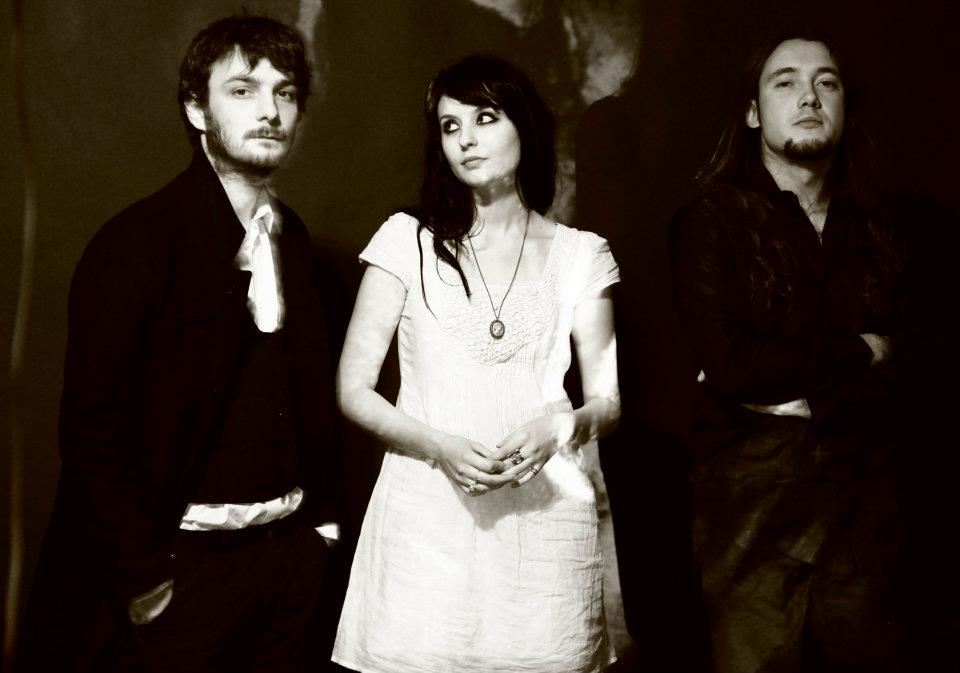 How was the run of shows in Europe with Alcest?
How was the run of shows in Europe with Alcest?
That was very, very cool. Very, very cool. We are, you know, old friends since so many years, and even a decade. Even the guys from Solor Dolorosa and Alcest we know us since 15 or 16, 17 years, I don’t remember exactly. But yeah, the tour was very good. It was about 17 dates, and we actually stayed together for almost one month, so it was very, very, very good, and uplifting, and really great.
I’ve never had the chance to see Les Discrets live. How do you translate the richness of sound that’s on the albums to a live setting?
Actually, that’s one of the most interesting parts of making music live. It’s exactly the exercise I prefer, actually, because just like you said, it’s very rich music with a lot of layers, and melodies and atmospheres and it’s of course impossible to make it exactly the same live, so I don’t know. I think depending on the songs, you have to choose for what is the most important in the song – is it the mood? The melody? The harmony? Or the atmosphere? Or maybe the catchy or doomy side – you know, you have to make some choices and then try to do your best so that these aspects of the music, which for example, is the harmony, then you have to do your best so that you have a maximum of notes and melodies in the songs. And of course, you have to get rid of some other details. That’s something that actually goes pretty quick, and which is not so difficult but which is interesting, yeah.
Can you talk about the interplay of acoustic and electric guitar? I’m thinking especially on Ariettes Oubliées… and using electric guitars as background for pushing acoustics to the front.
I think it comes from a choice of – to me, an electric guitar is a cold instrument. To me, the sound is cold. And the acoustic guitar and the folk guitar is something which is really warm. Just like I did on the first one, the first album – on the first album, there is always, always, always, even when there is distortion guitars, there is two folk guitars playing in the background, mixed very low, but still there are, to get some warmth to the music. On this album, I didn’t do it, but I changed a little bit the way of mixing and intertwining both. I think if I do that, it’s mostly because I really need some warm atmosphere, and I really like the wood, 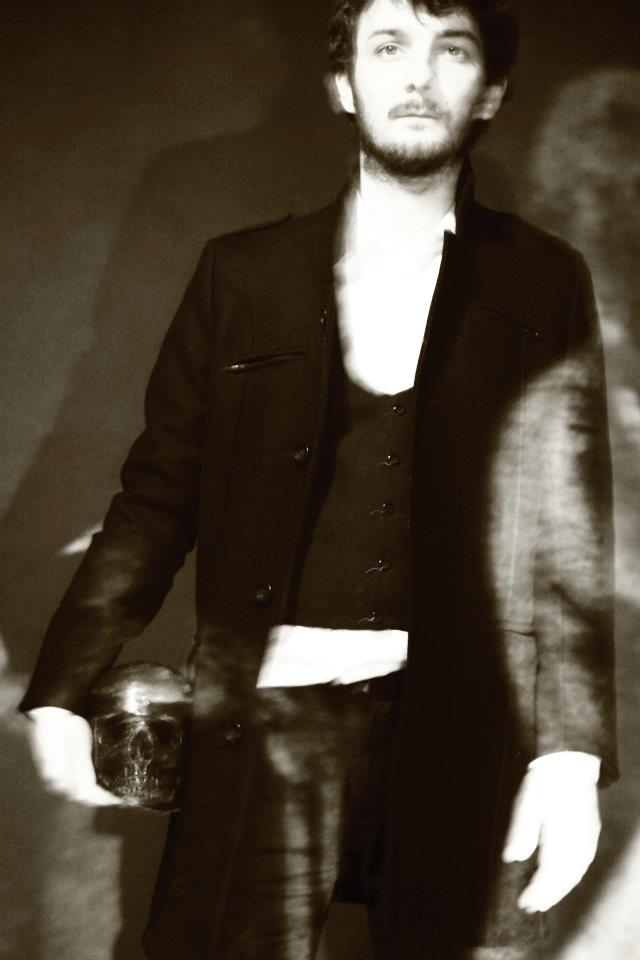 when you can really hear the wood in the instruments and in the drum kit, for example, or in a bass guitar, because Les Discrets is a project I really want to be warm and that you can really feel the organic side in it. So I think the acoustic folk is there for this reason, mostly.
when you can really hear the wood in the instruments and in the drum kit, for example, or in a bass guitar, because Les Discrets is a project I really want to be warm and that you can really feel the organic side in it. So I think the acoustic folk is there for this reason, mostly.
It’s interesting to hear you mention wanting to make it warm. I think that comes out on this album even more than the first record. This one has the melody more up front; it’s not as condensed-sounding.
The new one is less condensed or more condensed?
Less.
Yeah. You mean that there is more space and its breadth is much more?
Yes.
I do agree, yeah.
Was that something specific you wanted to do after the first album?
Yes, definitely. Because during the first one was too much music, too much informations all the time, and this is really something I wanted to change a bit so that there is more dynamics in the music than what I did in the past. Even if I don’t have anything composed so far and yet for a third album, this is something I will try to go even deeper, you know, to contrast and you can have a varied charge and really full, and sometimes really empty music, and you can really let ring for some seconds, and go back on the arpeggio, play it, and let it ring again, so that the reverb really goes very far and very wide in enters a really wide atmosphere.
How does the album cover relate to the music and how is the visual side intertwined with the musical side?
How to say? Basically, the pillar of the album is the song which is called “Ariettes Oubliées…” the self-titled song, because it’s taken off a poem by Paul Verlaine, [who] was a French writer. The name “Ariettes Oubliées” means forgotten songs, but ariettes is also a French female first name, and when I read the poem, I preferred to read “forgotten woman” instead of “forgotten songs,” but what Verlaine meant was really “forgotten songs,” this was just the way I interpreted it and I chose deliberately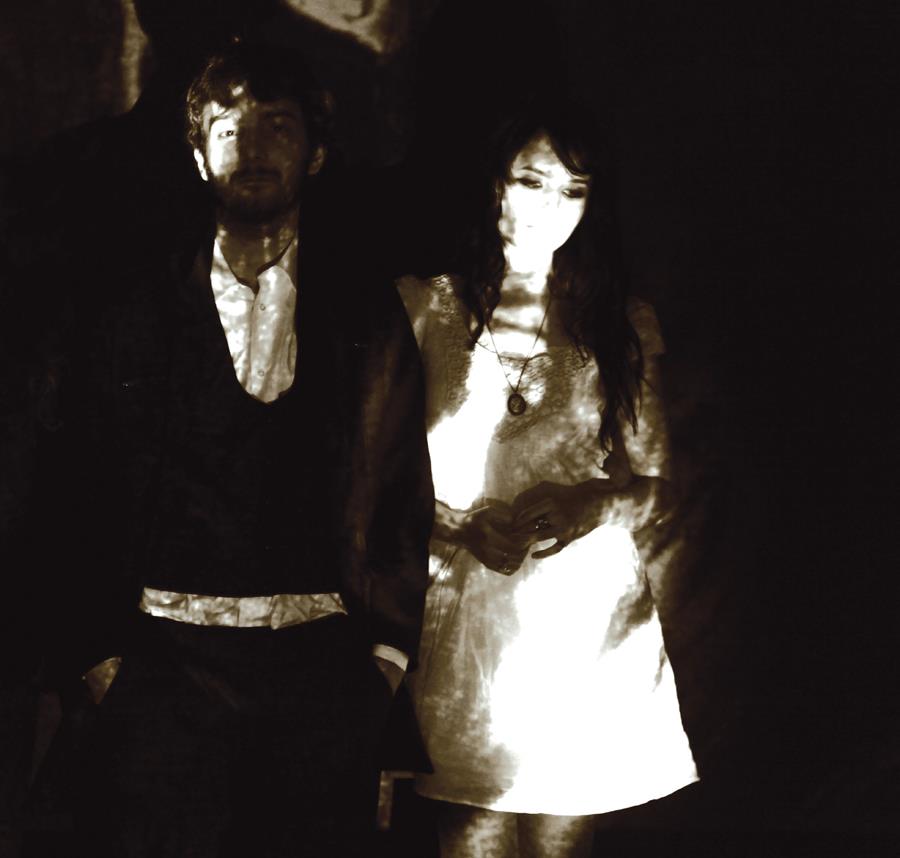 to see “woman” instead of “songs.” And then the poem was even fatter in meaning – because it sits very well when you think it’s “woman” instead of “songs.” So we based all the album on this idea of losing someone and stuff like this. And when it came to do the cover art, this is something I really wanted to underline – the fact that there is someone lost and forgotten, and you can feel this as the art presents, but you cannot really see in the painting. You can see a lonely guy with some kind of dress in the ends, and you can show the picture is very sad and the guy is very sad. You have some flowers on the right, which are red, the color of love and stuff like this. You can feel some emptiness and you cannot really see who is away, who passed away, who disappeared, and that’s a little bit for what the cover art tells. I think that Les Discrets is really a project which is as much visual than musical. Both sides are really, really important, and this is the perfect example, because without the picture, and without associating the picture to the music and to the lyrics, you cannot really connect what I meant. I’ve chosen a lyric poem, which speaks about forgotten songs, and the picture which I’ve chosen for it and I meant for it somehow tells that there is a human missing and a woman missing. It’s only when you have both picture and music that you can really see what I meant.
to see “woman” instead of “songs.” And then the poem was even fatter in meaning – because it sits very well when you think it’s “woman” instead of “songs.” So we based all the album on this idea of losing someone and stuff like this. And when it came to do the cover art, this is something I really wanted to underline – the fact that there is someone lost and forgotten, and you can feel this as the art presents, but you cannot really see in the painting. You can see a lonely guy with some kind of dress in the ends, and you can show the picture is very sad and the guy is very sad. You have some flowers on the right, which are red, the color of love and stuff like this. You can feel some emptiness and you cannot really see who is away, who passed away, who disappeared, and that’s a little bit for what the cover art tells. I think that Les Discrets is really a project which is as much visual than musical. Both sides are really, really important, and this is the perfect example, because without the picture, and without associating the picture to the music and to the lyrics, you cannot really connect what I meant. I’ve chosen a lyric poem, which speaks about forgotten songs, and the picture which I’ve chosen for it and I meant for it somehow tells that there is a human missing and a woman missing. It’s only when you have both picture and music that you can really see what I meant.
Which came first? After reading the poem, was it the image or the music?
The first was the image, definitely. How to say? I compose the music, and I was recording the music, and when I finished recording the instruments, I had some ideas about vocal melodies and stuff like this, so I took the first book I found – it could have been anything, like a dictionary or a music magazine with guitar reviews, I don’t know – but you know, just to sing some words, and it was by chance the book of poems, and I turned the pages very quickly, and when I found this poem, I thought, “Yeah, this is wonderful,” and when I finished to read it, then I really understood what it meant and how beautiful this poem was. When I finishing reading it and when I had the complete vision of it, a picture sprang to my mind and that was more or less the picture I drew. It’s very difficult when you imagine something, you know that in the picture, you know you imagine a guy indoors, dark atmosphere, but now after this, doing it exactly like you want is much more difficult. But yeah, that was the picture that came first, and that’s really often the case.
Do you feel like this art and this album captures that image you had in mind?
Yeah, definitely. Definitely. This is why I’ve chosen it to be the cover art.
I know you do a lot of animation as well. Do you see a correlation between how you build an animation scene by scene with how you assemble a Les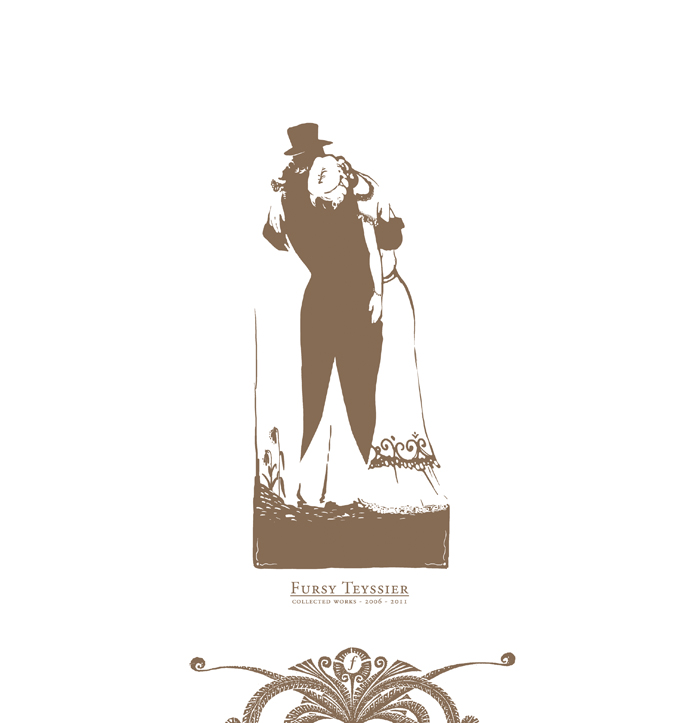 Discrets song layer by layer? Are those processes similar for you?
Discrets song layer by layer? Are those processes similar for you?
Yeah, definitely, because when I’m doing the music, I’m always trying to tell a story. Just a story of feelings, you know. There is always a kind of introduction, a development and conclusion, something progressive, just like a story. Almost each song of Les Discrets is based on this shape and this structure. And it’s just like a film. There is an intro and then a problematic development and then a conclusion. You know, it’s a very basic cliché about structuring a film or music, but still, this is exactly the way I compose the music. Definitely. And that’s also the way I compose the book, the art book edition, with the pictures in the booklet. Because all the songs and all the pictures together, if you have at least my vision that nobody will get it and this is not meant to that people will really get it, but to me at least, there is really a story between all the pictures. Like a comic book, a little bit.
I thought it was interesting that with so much focus on the visual side, the video was directed by Audrey. How did that come about?
That was actually kind of a decision. She came to me and she told me, “I was listening a few minutes ago to this song and lots of ideas came to my mind, and I’ve written something and what do you think about this? I think it could be cool to make a music video and what do you think?” So I said, “Oh yeah, cool.” And I read the idea she explained to me, and I was like, “Whoa, yeah, very cool.” At the very beginning, we were not supposed to be actors. It was more or less supposed to be some people, other people, you know. I don’t know, actors or actresses. But it was very difficult. We are only three to make the music video, so in the end we chose the best and easiest way to do it was to be our own actors. Since she came to me and she told me, “Yeah, I want to make this music video, what do you think,” and I said, “Yeah, very cool.” To me, it was really important that she was able to show the ability to not only write the lyrics or sing some vocals in the album, but also to express and to share a vision of what the song means for her – into a music video. It’s a way for her to express her feelings and her heart. I’m very, very happy with the music video and I think it was actually her first film, and I think it’s really, really good for a first film.
How collaborative is the process of writing lyrics? How does she come into that process?
To write the lyrics? I don’t really know. This is kind of a secret world. She just is kind of inspired. I don’t really know. I think she’s listening to the music I’m doing sometimes, the music on the demo I did, and she writes out some lyrics, but how and when I don’t know. I think it just comes to her mind, but I don’t know. Sometimes, she’s inspired of something that happens in life, or she has a certain inspiration and just writes down the lyrics. But you know, I’m not really aware of her creating process. This is not something we are speaking so much about. What comes to me is what she has to say, and how she did it, you know, I just don’t mind, and that’s a little bit the way I think – when people ask me how I compose and how I am in the recording industry 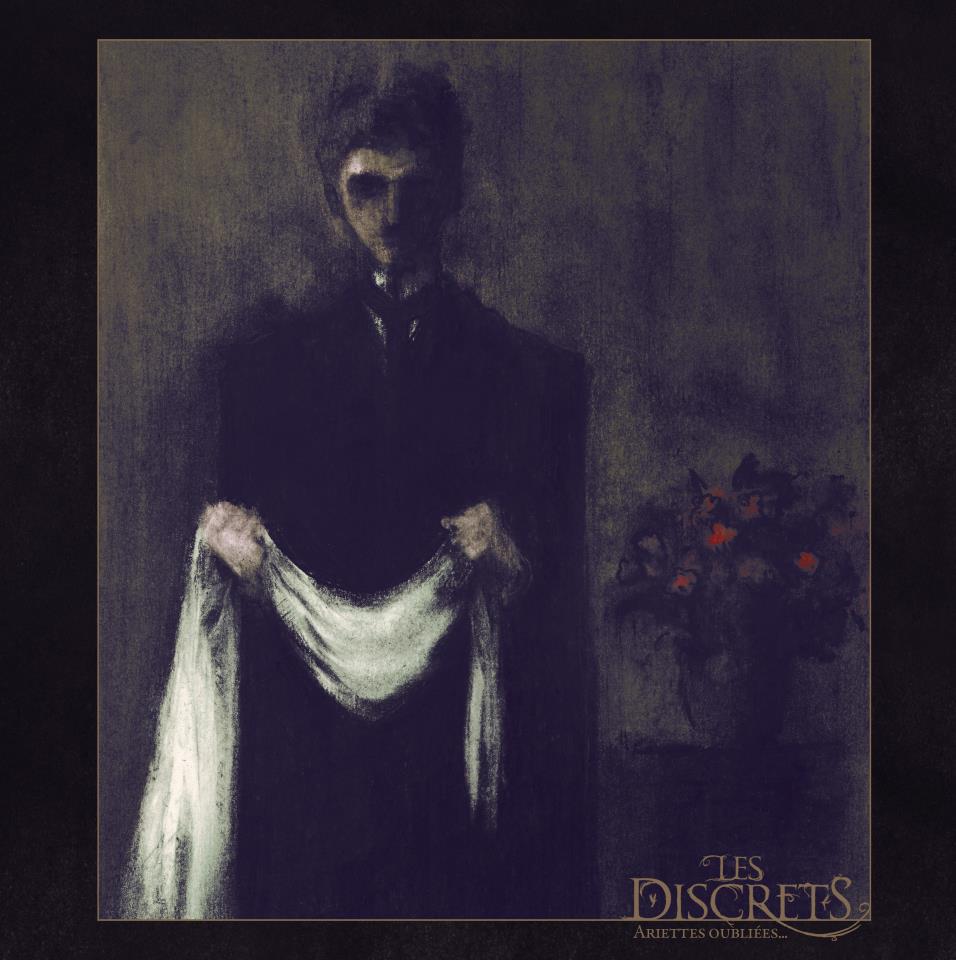 and how it is for me, this is not something I like to speak about, because to me it is not interesting at all, so just like it is for her. I really don’t know and I don’t really mind. I think (laughs).
and how it is for me, this is not something I like to speak about, because to me it is not interesting at all, so just like it is for her. I really don’t know and I don’t really mind. I think (laughs).
As Les Discrets develops, do you feel less tied to a genre? Do you pay any attention to how the band is categorized?
No. No, no, no. At the very beginning, you are always annoyed, and look for all those tags and all those names, and genre, and people always need to put some names. Now I really don’t mind. People can say what they want and if it’s a music for, I don’t know, for hedgehogs (laughs) or pink princess or whatever, I really don’t mind. It’s just names and what I’m doing is just music. Music basically cannot be described in two words, otherwise it wouldn’t exist. People can say what they want. I think what I like from people is when people listen to the music and listen to it again, listen to it again, and really appreciate it, or dislike it, I don’t mind, but when it feels really something. But people just coming up with names and a need to put the music into a certain category of music and style, to me, I really don’t mind, actually. I really don’t mind.
I know you obviously just finished the tour with Alcest. What are your plans for the spring and into the summer. Are you coming to the US with Alcest on their tour?
No, no, no. I’ve been proposed to come, one month ago, especially for the second part of the tour, but I had to refuse, because I don’t want to tour so much, because music is not my job. To me it’s just some kind of holidays when I’m going on tour, and I have a lot of work in animated films and directing and stuff like this here. It was the two latest years where I was really mostly dedicated to the music, and now I really need to work on animation and to go ahead with my job, so I will slow down a little bit for the music. I will continue to make some shows sometimes, some single shows in Europe, or maybe a very, very short tour, four or five dates, in the Europe, but going to the US is very complicated because of visas and walking disasters like this. Nothing is expected now for the US. I think Les Discrets will certainly come to the US, but not before two years, I guess. One and a half or two years.
I guess you’re kind of working on both all the time anyway, but is it a big change for you to go from working on music to working on animation?
No, not at all. Not at all because even when I’m doing music, I’m thinking about animated films, and when I’m thinking about animated films, I’m thinking about what I could do in music. My mind is always mixed in between both, but my hands are split. What I do is different. But no, there is no difficulties for me to switch, and I could do one hour of music and one hour of drawing, one hour of music, one of drawing, if that would be possible, and I would have no trouble to do this at all.